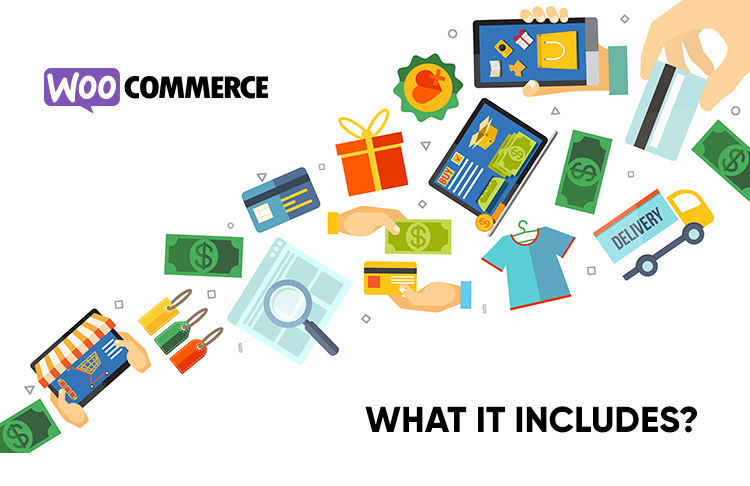Worldwide, eCommerce is now pegged to be worth $3.914 trillion and is only expected to grow, led by Asia-Pacific, North America, Europe, Latin America, and the rest of the world according to eMarketer.
As far as business opportunities go, there’s nothing bigger than eCommerce. WooCommerce — the omnipresent free plugin for eCommerce — is your default choice. On top of that, there are several different options available depending on specifically what you’d like to achieve.
According to Kinsta, WooCommerce powers 22% of the top 1 million eCommerce sites in the world. It powers over 70 million WordPress e-Commerce shops, and 22% of the top 1 million sites using eCommerce technologies.
Like WordPress, WooCommerce is also free to use, but you’ll have to pay if you want to use any of the 300+ WooCommerce extensions that provide extra functionality, such as product variation swatches and the ability to sell subscriptions.
Would you like to Launch your own eCommerce store? Your Entrepreneurial journey is in for a treat if you consider WordPress for e-commerce. With nothing more than your basic WordPress website and WooCommerce, eCommerce is only a few clicks away from fruition.
WooCommerce For eCommerce
WooCommerce was first released in 2011 by two developers: Mike Jolley and James Koster. Later, WooCommerce and WooThemes (the company that created WooCommerce) were both purchased in 2015 by Automattic — the same company behind WordPress itself.
At the time, there was nothing like WooCommerce: it was easy to use, free, and it could literally power up your eCommerce with a few clicks. WordPress made for a compelling choice, and using WooCommerce for your online store was an easy no-brainer.
On top of the WooCommerce as a standard option for your online store, today, you have several other ways to create eCommerce stores with WordPress. You have dedicated eCommerce plugins (some free, some paid), completely stand-alone businesses that integrate with WordPress, or SaaS applications that help you run eCommerce stores without really getting involved with WooCommerce. ECommerce store building options today are far too many, to say the least.
Depending on what you want to do with eCommerce, WooCommerce also has several WooCommerce Extensions available such as WooCommerce Subscriptions, WooCommerce Bookings, Automate Woo, and several others. you also have the option of several options for specific business types, as follows:
- Want to build directory websites or portals? Use any of these top directory plugins
- Would you like to sell subscriptions? Pick from any of these terrific WordPress Subscription plugins
- Want to run a membership site? Use any of these proven membership plugins.
Depending on WooCommerce for your site seems logical if you consider the fact that almost everyone else in the world defaults to it.
Why WooCommerce?
There are several other reasons why you might want to consider going with this eCommerce store set up as a default:
- WooCommerce — as far as basic usage goes — is free to use and comes with several extensions and plugins (including third-party plugins) to ensure that you could possibly run any kind of business (from blogs and simple eCommerce to subscriptions, memberships, online directories, and more).
- The huge popularity and the dramatic use of WooCommerce by around 42% of all other eCommerce sites in the world.
- The easy availability of various Woo commerce extensions, plugins, and WooCommerce themes available for use for ecommerce.
- One-click integrations with several other third-party ecommerce plugins, apps, and tools to cover the rest of your ecommerce business.
- Easy and quick access to help and customer support for your online store (if and when you need it) thanks to the abundance of WooCommerce specialists, WordPress developers, and even agencies that specialize in WooCommerce. Makers of individual plugins and WooCommerce itself also provide customer support when you need it.
- If you ever have a need to scale up and grow, WooCommerce easily allows you to do so without breaking a sweat.
- With WordPress and WooCommerce, you get complete control of your online store’s design while not having to reinvent the wheel. You’ll also retain control on integrations and more.
- Since you are using WordPress as the CMS, you’ll also have an easier time to power up your eCommerce store and prepare for Inbound marketing — which includes blogging, SEO, social media, email marketing, paid advertising, using sales funnels or landing pages, and even marketing automation.
WooCommerce: How to Start With eCommerce, The Easy Way?
Assuming you want to skip the trouble of having to choose between several thousand eCommerce plugins and other plugins built to integrate with WooCommerce (not to mention other apps and tools that help), we’ll stick to basic WooCommerce setup running for now.
We are also assuming you are taking the route of eCommerce to sell physical products or digital products. Your WooCommerce setup only pertains to one-time transactions (for physical and digital products).
At this juncture, it’s also assumed that you have necessary design assets such as your logo. We are also skipping the part where you’d have to choose from some of the best WooCommerce themes you could get your hands on.
Step 1: Setup WordPress, Choose Your Theme and Add The WooCommerce Plugin
Depending on where your website is hosted, you can set up WordPress on your domain in just a few clicks (even one-click installations are a possibility). Once you’ve set up your content management system, picked a theme for WooCommerce, eCommerce is as simple as adding the free WooCommerce WordPress plugin to get started.
Want help in getting started to start your small business? See our quick 5-step guide to help start a basic business website
You’ll also want to customize your WordPress installation a bit. Here’s a guide on basic customization for your WordPress website.
If you are a small business owner, and if your time is too valuable to be wasted on installation or if you are new to WooCommerce or the content management system itself, you can also choose to use our exclusive WordPress theme installation service.
WooCommerce Themes
When it comes to pre-designed themes and templates, WordPress has one of the vast collections. It is easy to find a niche theme for creating a WooCommerce store with WordPress.
There are themes with different designs, and different features. Moreover, if the WordPress theme is WooCommerce based, you can simply use the addons and to add new features to your online store without having to spend hundreds of dollars.
You can also choose the type of theme you want, since there are plenty of options. There are themes with page builder, to let you easily design pages with drag and drop options, while there are some simpler themes that will fulfil its purpose, but the options available are limited.
Therefore, based on your requirements you can choose an ideal WooCommerce based eCommerce theme. There are WordPress themes for selling downloadable products, for creating a business website with eCommerce features, or a blog with a small storefront, etc. All these themes are generally built around WooCommerce and you won’t even have to download and install WooCommerce separately or spend time with unnecessary setup process.
Due to the intense competition in the theme market, the themes are professionally designed and come with ample features at a very affordable price. They generally also include theme support that enables store owners to contact the theme developers through email and ask for help when required. Besides the premium themes, there are also a number of free themes available that you can use for trail basis to get familiar with WordPress and WooCommerce options.
Step 2: Enable eCommerce: WooCommerce-driven Physical & Digital Product Sales
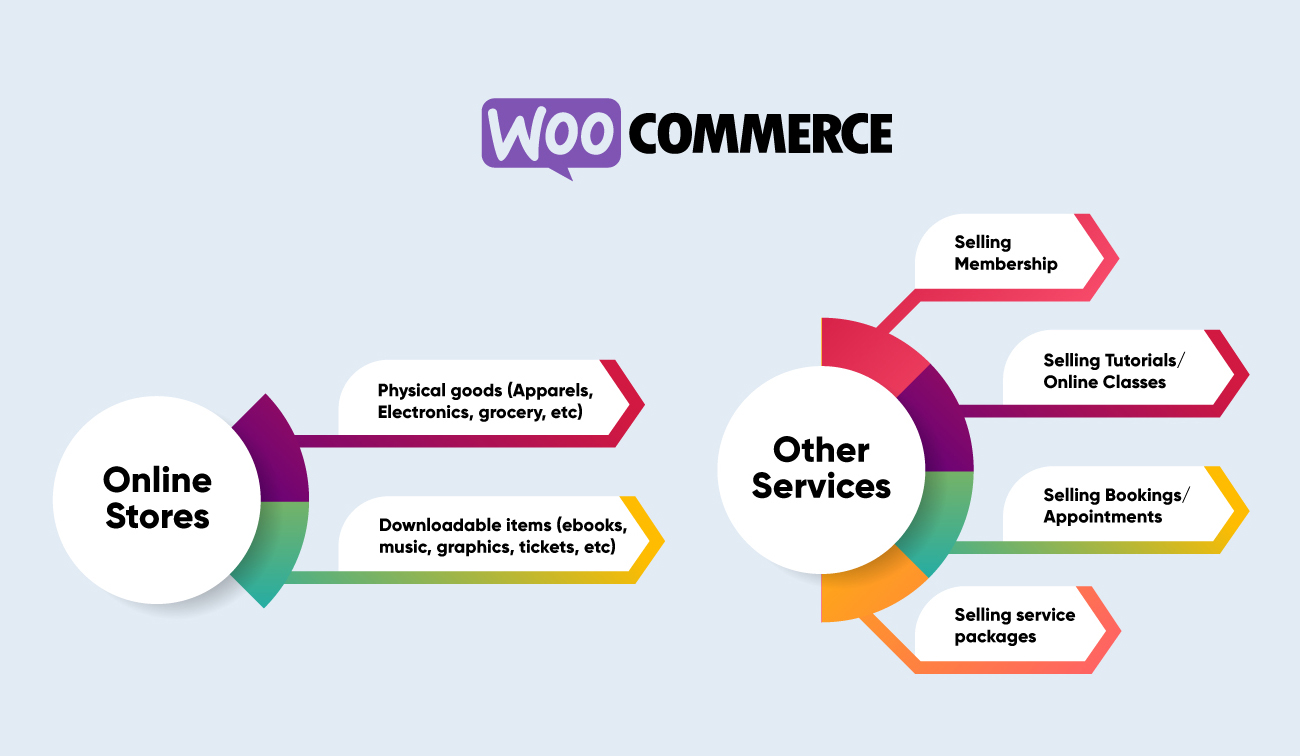
After setting up WordPress, choosing an appropriate WooCommerce specific theme, and the preliminary WooComerce Set up, and your payment options activated (this only relates to one-time payments on your site) you have a decision to make: Are you selling physical products with one-time payments enabled or are you selling digital products?
Using WooCommerce to sell physical goods and digital products is as easy as sending an email.
For physical products, you’d have to set them up as such from WooCommerce plugin settings. Note that you’d have to also have to add additional details while you create products such as weight, size, variants (if any), shipping options, and more. If you are promoting your physical products, you’d also have to specify retail price and sale price separately
Would you like to sell Product Add-ons (such as gift wrapping, upselling, Shipping options or integrations, and more) while selling your physical products? Use the Product Add-ons WooCommerce Extension from WooCommerce.
As with most online stores, WooCommerce allows you to add shipping details, inventory details, link other products (to create bundles), and more.
Selling Digital Products with WooCommerce
For Selling Digital Products with WooCommerce, all you have to do is to specify that you are selling digital goods (such as downloads, for instance).
Go to WooCommerce > Settings > Products > Downloadable Products, select a download method, enable access restrictions for your products, and more.
Here are the detailed instructions on how to use WooCommerce to Sell Digital Products and a list of WordPress Themes for Digital Products.
Note: When we say digital products, we mean products that can be downloaded or your customers can get access to links (which in turn lead to the digital product they signed up for). You could sell eBooks, artwork, illustrations, reports, templates, plugins, software, music, videos, and so much more.
If you’d like to sell anything other than physical goods or digital products, enabled by one-time transactions built on top of standard WooCommerce, read on:
Sell Subscriptions With WooCommerce

Membership sites are an all-inclusive, community-based approach to selling products and services which require a monthly fee for membership access.
Meanwhile, if you’d just like to sell products (physical or digital) using WordPress with nothing more than an option for your customers to place recurring orders for your digital goods or physical goods, you’d want to consider selling subscriptions.
WordPress enables you to use specific WooCommerce extensions or plugins for Subscriptions too. The popular choice is the WooCommerce Subscription Plugin if you are using WordPress. However, there are several other options to enable subscriptions on WordPress.
Here are the Top alternatives to The WooCommerce Subscription Plugin.
Sell Memberships
Starting a membership site lends itself to an awesome eCommerce model. It particularly appeals to a type of business that promotes exclusivity to a community, continuously adds value to the membership itself, and provides ongoing resources, training or support.
Selling memberships calls for a little more than the straightforward eCommerce business models discussed above. To create a membership site on WordPress, Powered by WooCommerce, you’ll need a robust membership plugin.
You’ll also need a little more work when it comes to the design, the setup, and the functionality of your membership site.
While the actual set up and build for your WordPress membership site differs (according to your business itself, the front-end design or template used, and more), here are the usual steps you’d have to take to get your WordPress membership site ready:
- Get your domain, your hosting, and the basic WordPress setup (with the WooCommerce WordPress plugin Installed)
- Choose your preferred Membership Plugin. Pick your choice from any of these Membership plugins to get started.
- Set up your membership levels (starting from free to paid membership accounts). Access to your membership plans is managed from inside any of the several membership plugins for WordPress. Except for your free membership tier (which needs a free sign up), all other membership access levels will be restricted to paid members on your WooCommerce store.
- Choose your payment options and then add your payment method. From inside your membership plugin settings, choose the payment gateway option you’d want to use. Note that most WordPress membership plugins directly integrate with WooCommerce.
- Design a pricing page on your site so that your potential customers can see what they get for each price level of your membership tiers.
- Create and restrict members-only content whether it’s downloadable files, blog posts, videos, or other resources. You’ll have to specify which content is available to the various membership levels you created above.
The membership site business model usually translates itself into a recurring revenue-generating eCommerce option for you.
If you are looking to create a WordPress-based Membership Directory site, get a kickstart with 15+ hand-picked membership templates. Or, see our guide on How to Create a Membership Directory Website with WordPress.
Sell Tutorials Or Online Classes

Have skills? Love to teach? You should seriously consider selling online courses or tutorials online. According to Research & Markets Online courses Statistics 2023, the online education market is pegged to reach US$350 billion by 2025.
Making money off selling online courses is a lucrative business with the added benefit of fat profit margins (since you technically only need your skills, knowledge, and the ability to create courses online).
Selling online courses is one of the many ideas as a spin-off from the main category of selling digital goods but it’s not limited to individuals alone.
Small businesses can also launch courses as a great way to boost their lead generation efforts. Self-employed freelancers and professionals can use online courses as a way to establish authority, and mid-size to large businesses can use online courses as a direct pathway for training and continuous education.
To start selling tutorials on your WordPress website, you’d have to deviate from your usual WooCommerce set up, of course. To start with, you’ll need the basic WordPress setup, a relevant WordPress theme for education as far as the front end design goes, and a dependable LMS plugin.
Your choice of WordPress LMS plugin integrates directly with a relevant WordPress LMS theme for courses or education and integrates with WooCommerce (other integrations with payment gateways also exist, just in case).
Need help trying to find the best WordPress themes for education or for online courses? Here’s a gigantic list of 60+ Education Themes.
Sell & Monetize Directories
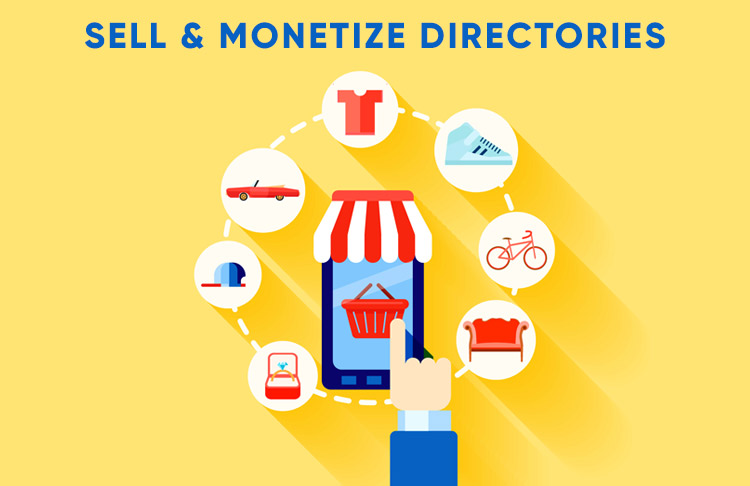
The days of all-purpose, general, anything-can-do portals like Yahoo, BOTW (Best of the Web), and Spoke portals. Classified sites and online directories are all but gone. While some of these directories still exist (and hold value), it’s a beaten path that you’d do better to stay clear of.
Creating directories with WordPress doesn’t just have to be what it sounds like, though; it doesn’t have to be limited to an online classified site, for instance.
You could get really creative with directory website if you start thinking of this as a collection of items (images, videos, text, and more) driven by a powerful and flexible CMS like WordPress.
For instance, you could rebuild and replicate the likes of Airbnb or ProductHunt. Or you could build niche directories in industries such as Real Estate like Romain Gelez did with Best Deals Punta Cana. Perhaps you could launch and grow a niche, well-defined Job board.
Creativity is the name of the game when it comes to building a business with WordPress directories (while all the good sense of launching businesses will apply).
WooCommerce Add ons & depenedent Plugins
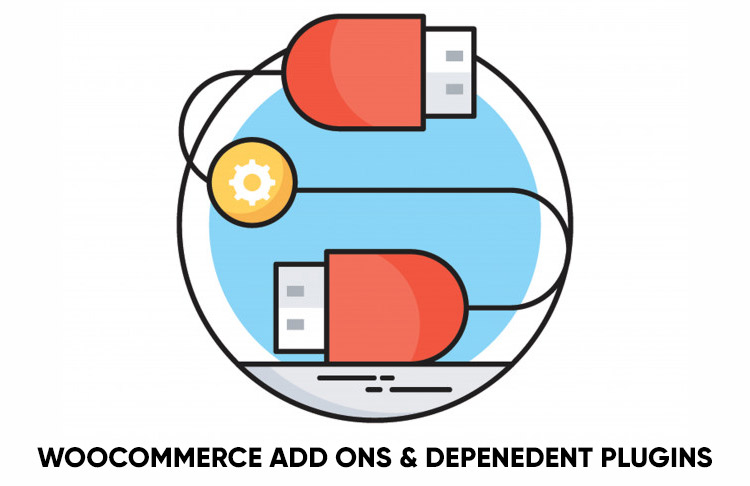
Many add ons and plugins are developed based on the WooCommerce plugin. All these free and paid addons are developed to add a specific features to your eCommerce sites. For instance, there are plugins to help you with complex and vital functions like cart abandonment, while there are simpler WooCommerce add ons to let you add simpler features. For example: An Add on eCommerce plugin to add the feature of wishlist, or save as favorite, a payment gateway or a product page image zoom feature, or even to add new promotional strip to the top of your website to capture visitors’ attention.
All these addons are really useful and ensure flexibility when using WooCommerce as your eCommerce platform. Even the most popular, premium eCommerce platform like Shopify- follow the same model. You can easily add more features to your WooCommerce based eCommerce website, just find and add new add on.
In future, you can grow your eCommerce business with experience and therefore, flexibility is must. And use WooCommerce for your eCommerce store, add these free and paid add ons, try different things according to different situations and create a fully functional eCommerce website with the help of WooCommerce.
WooCommerce plugins and Add-ons
Payment processing through WooCommerce
WooCommerce is the handsdown one of the best options for integrating payment processing feature into your WordPress website. People use WooCommerce, not just for setting up an e commerce website, but also for facilitating the visitors to pay online through their website.
Since WooCommerce supports both, physical as well as digital products, the eCommerce platform for WordPress can be used to sell intangible products like tickets, pass, etc. For this, you can even allow different payment gateways for the users, so they can choose according to their convenience.
There are more than 60 add ons including most of the best and popular payment gateways to choose from. Depending on your location, and/or any other factors, you can choose the payment gateways that you want to integrate into your website.
Sell Productized Services
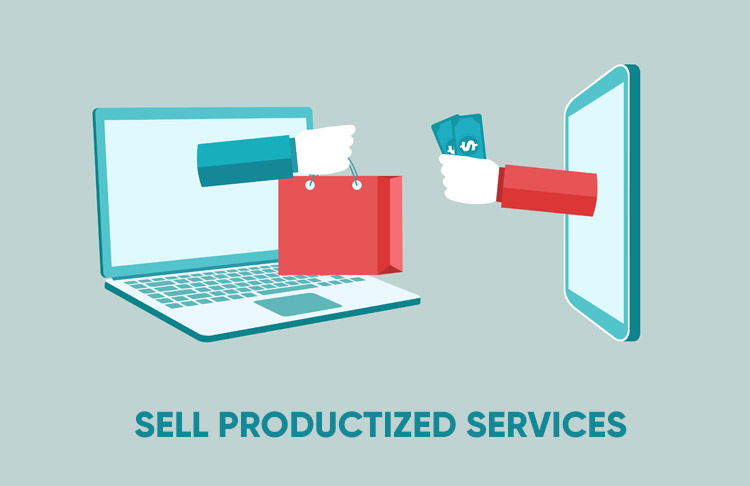
Taking the basic “service” business one level up, you could package your services in a way that you could sell services as products. Selling packaged, pre-defined services (sometimes also offered in different pricing tiers) is known as Productized services by taking the approach of selling products and services on WooCommerce without the need for shipping.
According to Brian Casel, absolutely anyone — individuals, agencies, startups, software companies, and even traditional businesses can provide productized services to their customers. As a “done for you” option, a productized service is an easy path to take if you ever wanted a way to add on top of your billable hours model that’s typical for service businesses.
To succeed with selling productized services, you’d have to start with the right strategy and a suitable product-market fit. It’s best if you can validate your productized service (experience with selling the exact service to your previous customers is validation enough). Once you are ready with your service packages, it’s just a matter of making sure that WooCommerce does all the heavy lifting for you.
Go to WooCommerce settings, add services as prepackaged products (create products as you normally do, and uncheck the box which says “requires shipping”) with clear instructions on what you need from clients to execute or deliver your services. You’ll also have to specify what your customers get in exchange for the price they pay (also depending on the specific packages, product variants, or tiers of service they choose).
Dropshipping With WooCommerce
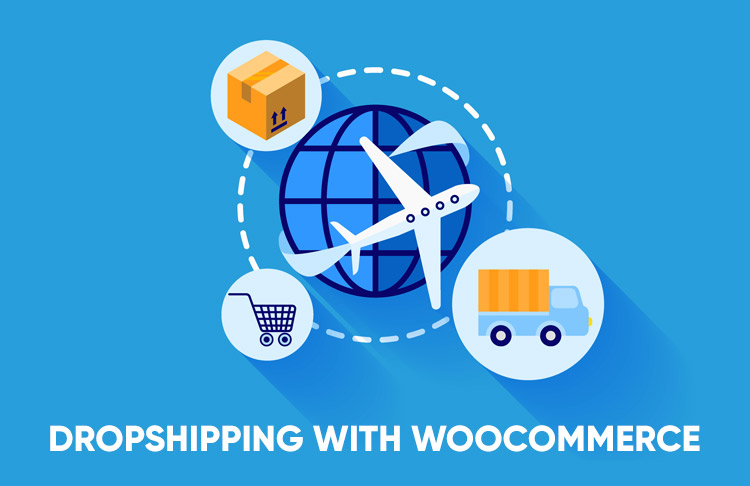
When you choose Dropshipping as your business, you’d sell physical products (as most eCommerce sites do) but you’d be selling products you don’t create and/or those that you don’t source.
Dropshippers are suppliers (could be retailers, online sellers, or wholesale companies) that’ll ship out products to your customers on your behalf when orders come through on your Dropshipping site.
For all technical purposes, your dropshipping is the same as the typical online store. You’ll still create a regular eCommerce store (complete with your own design, branding, and more).
Dropshipping is a business model that doesn’t require you to hold inventory, deal with shipping, or worry about transportation and logistics. While your dropshipping store on WooCommerce looks, runs and operates like a regular store selling physical goods, you’ll not be dealing with inventory and shipping.
Using WooCommerce for Dropshipping is easy thanks to the availability of plugins such as AliDropShip, WooDropship, and the official WooCommerce DropShipping extension that are much like add-ons to your dropshipping eCommerce store.
Print On Demand (POD) With WordPress
Print On Demand (POD) is a derivative of Dropshipping with several changes to the way it operates from traditional dropshipping.
To begin with, your Print On Demand business depends on only selling inventory that the Print On Demand supplier you’ll work with (such as t-shirts, hoodies, mugs, and more). Note that these products are plain and come without any design imprinted on them.
To run your Print On Demand business, you’d need to define a specific target audience (startup founders, women who work from home, etc.) and then create designs (that’ll match the products available) to help develop a set of products that are a great fit for the target market you select.
Once you add your design to a product (such as a t-shirt), you are ready with your products which could then be ported over to your WordPress Print On Demand site easily). From this point on, it runs and functions like a WooCommerce powered e commerce website.
How to create a Print on Demand website?
The Print On Demand with WordPress and WooCommerce is easy enough to get started thanks to several WordPress plugins, WooCommerce extensions, and third-party apps available.
Printify, for instance, is a Print On Demand supplier. To start with Printify, all you need to do is to create an account with Printify, connect your WooCommerce powered store, create your designs, and add your products. When a customer purchases your products, Printify takes care of printing the actual product and then shipping it to your customers.
Another popular Print On Demand supplier is Printful which also allows you to run your WooCommerce store with direct integration.
How do you intend to use the power of WooCommerce to get into the eCommerce game? Share your ideas with us.
Pre-requisites for WooCommerce based eCommerce sites
WooCommerce and WordPress are both free. But you will need a safe hosting environment as well as a good domain name to represent your website. Besides, for secure payments you will also need an SSL certificate and a secure payment processor.
So, considering the free eCommerce platform in form of WooCommerce, you may want to invest in following for your WooCommerce online store.
1) Hosting space & Domain name
Unlike other eCommerce options that are self hosted, WordPress requires you to acquire your own hosting space and domain name.
For example: Shopify is a self hosted eCommerce platform. But it isn’t technically free. The cost is included in the monthly fee. The difference with WordPress is, you are in fact free to choose the best service, or use the hosting space you already own.

There are so many affordable, secure and fast web hosting options available that choosing and procuring one is simple. We always recommend Bluehost to our users for their WordPress WooCommerce requirements since there are special packages for eCommerce WordPress websites.
2) A Good WordPress Theme
First of all, you will need a beautiful e Commerce theme for starting your WordPress based online store. A good eCommerce website template based on WooCommerce is not hard to find. Based on your requirements, you can browse through this list of WordPress eCommerce themes, and start with your website.
Or you can choose from Themeforest themes collection where there are a lot of affordable themes with different styles and features. There are so many options to choose from so we recommend you to sit down with a pen and notepad and make a list of all the features that you want in your eCommerce website.
Once you have a clear idea of what you want and how you want your website to be, you can do a little bit research about the tools/features to make it happen and choose a WordPress theme that supports all those features or at least support them.
3) WordPress plugins & Addons
Besides a WordPress theme, you may need some additional plugins for your WordPress based e commerce websites. For instance, a good contact form to start with, an SEO plugin, or a WooCommerce add-on, some addons for payment gateways, etc.
While most of these plugins and add-ons are free, you may also need to get some premium addons, to extend the existing features or to add a new feature to your website.
You can just install WooCommerce and start with your online shop right away. But over time you may need new features and that’s when you would want to add new WooCommerce plugin addons.
4) Security
Since an eCommerce website, you would like to ensure that your customers can interact with your site in a safe environment. Especially with the rising risk of online transaction fraud and information stealing, it is vital that you ensure total security of your registered users as well as casual visitors.
For this, you can use different security plugins, or rely on the best security services like Sucuri, Malcare, etc. Besides, it is now essential to make a site that is secure, and for that you will need an SSL security certificate.
There are different ways through which you can ensure the security of your online store and one of them is to make sure that the plugins and theme you are using are all safe and secure. Some plugins are very useful but they should only be downloaded and installed on your eCommerce platform if they are from reliable sources.
5) WooCommerce backup
Backups are life savers in times of crisis. Whether yours is a business website or an eCommerce one, there are chances of data loss on the internet.
The causes can be technical issues or security issues where your site data is compromised. In such circumstances, you can confidently remove the damaged copy of your website and restore the latest backup version to resume the services of your site without affecting your end users.
Especially when it comes to an eCommerce website, backups are essential because unlike business sites, there is a large number of data on an eCommerce website.There are different parts of website that should be protected.
- The inventory data, the products, the quantity, etc.
- The order details, order to be fulfilled, refunded, etc.
- The transaction details for the corresponding orders
- The user information, saved cards, phone numbers, address, and other preferences
Similarly, there can be a lot of information that you cannot afford to loose as an eCommerce website owners. On the other hand, it is also a waste to lose your visitors to an unavailable webpage. So the restoration & repair period can be minimized with the help of backups.
Many hosts come with a facility for backups, or you can rely on a specialized backup service for your website. Such a service will allow you to set a trigger for automatic backup at the defined duration. Therefore, you can rest assured, focus on your eCommerce strategies and other important aspects of your website.
WooCommerce: Ease of use
WordPress is a CMS that can be used even by the non-technical people to create websites on their own. The website can be simple sites for online presence or multifeatured directory websites, WordPress can do it all.
Similarly, you can use WooCommerce and create amazing eCommerce websites with WordPress with little to no technical expertise. WooCommerce comes with an easy to use interface and carefully organized sections and options to let you manage your eCommerce website.
It is a complete eCommerce plugin that lets you manage everything with very intuitive options. For example: There is a section to manage the inventory or view all of the products at one page. There is an inbuilt form to let you add products. Once added, you can easily edit it and update the description, add more images or update the quantity as and when required.
All these features are really easy to use and for further assistance with our website, you can use the plugin documentation.
WordPress WooCommerce: Installation & Use
WooCommerce comes with a setup wizard that allows you to set your eCommerce plugin up, step by step. Just go through the steps as they appear and fill the forms to get started.
Install & Activate WooCommerce
Step 1: Address of your store

The base address of your eCommerce store. This is necessary for the tax calculation according to the laws of the city, and calculating shipping, etc.
Step 2: Industry Type

As you can see in the image below, you will be allowed to choose the type of industry your eCommerce website will operate in.
Step 3: Choose the type of products you want to sell

Here, you will be allowed to choose the type of products you want to sell. They can be physical, downloadable, bookings, etc.
step 4: Store details

Here you will be required to provide some information about your store. First of all you can select the approximate number of products that you want to sell through your e commerce store, and then provide details about any other platform you are using and the annual revenue of your business.
Step 5: Choose a theme
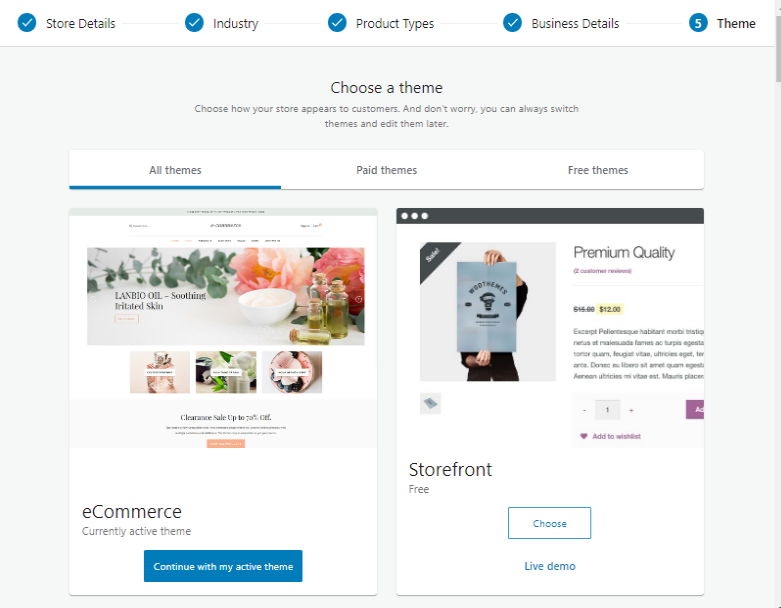
This is the final stage of WooCommerce setup and you can choose a theme to use WooCommerce with. If you already have a theme installed, you can choose – “continue with my existing theme” or you can choose from the free and paid theme options.
Who should use WooCommerce?
WooCommerce is for everyone. Whether it is a small trader, or a big size business. It is one of those eCommerce platforms that can do well regardless of the number of products you sell on the site.
Because the speed of your website and its performance depends on the type of web hosting and the number & types of plugins you install in WordPress. Moreover, it is even good for the beginners to start with. Even those with absolutely zero website building skill, and eCommerce experience, can start using WooCommerce to start their small business website.
WooCommerce: What it includes?
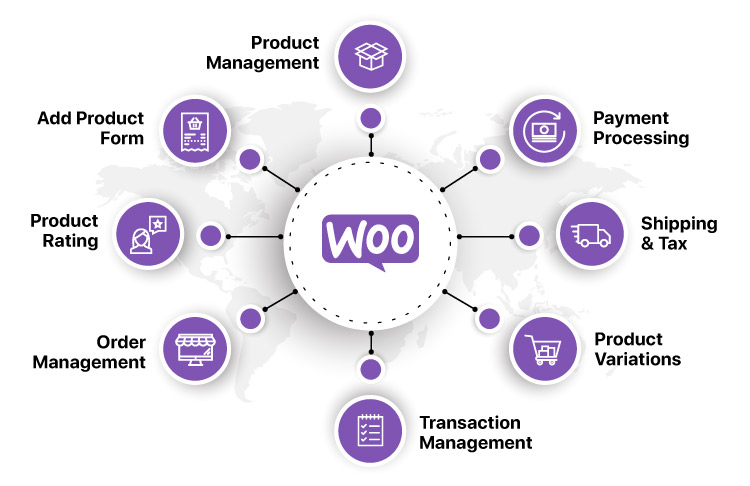
The WooCommerce WordPress plugin is a complete package for managing an online store. All the basic eCommerce features are included in WooCommerce and they can be extended using a right addon.
Inventory Management
WordPress lets you manage the product inventory on your website. Much of the process is automated and you can easily check the quantities and categories of the inventory.
You can even download a CSV copy of all your inventory and import it to another site. There are also options to let you bulk manage your inventory.
Physical as well as downloadable goods
The multipurpose eCommerce plugin can be used to manage physical or shippable products, as well as intangible products too. Therefore, it can be used to create a website with downloadable as well as
Order Management
You can view all the orders placed on your website and manage them.
Transaction Management
Transactions on an eCommerce website are very important, not just for records, but also for
Product Page
You can just create multiple product categories ad sub categories and start adding products to your eCommerce website in minutes. Just go to the product menu, choose “add new” and start adding products to your WordPress website.
You can add product images, set a proper detailed title, add price, shipping price, etc. Once you create products for your website, you can revisit the page and edit them anytime.
Shipping Management
You will definitely need to outsource drop shipping and integrate tool into your website for it. But what WooCommerce will help you with – is by providing options for managing shipping costs.
You can divide locations into shipping zones and set different prices and rules for the shipping costs. Therefore, the shipping costs will be automatically calculated and applied based on the delivery address.
Variable Products
With the WordPress version, you can also create variable products – and set different prices for the two variants. For instance: A fur coat in different colors, grey as well as golden brown are available but the prices for different colors should be different.
Therefore, you can create variable products very easily using this e Commerce plugin.
Is WooCommerce ideal for eCommerce?
WordPress is a CMS built for blogging, so should you use WordPress + WooCommerce to create an eCommerce website?
Many of our clients have similar questions. A lot of people are unsure about choosing WooCommerce, considering there are so many dedicated platforms for creating store website.
However, depending in your requirements, you can choose a right platform for creating eCommerce websites.
When to use WooCommerce?
WooCommerce definitely a very efficient and useful plugin. Especially, if one of the below mentioned criterion matches your situation, you should definitely use WooCommerce:
You already own a WordPress website
If you already have a website of ownership, based on WP, and do not wish to switch the platform, you should go for WooCommerce to extend the features of your existing website. So you will already have a hosted live website, with audience and you can use it to generate leads on your eCommerce website too.
Moreover, you also have the experience and familiarity of knowing WordPress, so there’s no need of going elsewhere.
Your requirements are too low
Often when you are trying to create a small but fully functional eCommerce website, the dedicated eCommerce platforms will look a lot expensive. Under such condition, you can rely on the free WooCommerce and WordPress platform. Ofcourse there are some costs involved (the hosting, add-ons, etc), but it will still be much affordable than the platforms like BigCommerce or Shopify.
When not to use WordPress?
The paid, self hosted, ecommerce website building services are built for those who want an absolute ease of creating and maintaining eCommerce websites. Using them is quite straightforward. Just create an account, choose the type of service package you need, complete the payment. You can then login to your account, choose a theme and start editing it to create your own website.
There is absolutely no setup, no need of procuring different services, no need to look for different add-ons since all the available options are displayed right into the WordPress dashboard, and you can easily search and add.
So those who are not ready to spend a lot of their time and efforts to create & maintain their website, can rely on such eCommerce platforms rather than using WooCommerce.
However, the pricing is always the downside with such platforms. So if it is not an issue for you, you can try such a platform.
WooCommerce Support
WooCommerce is open source ecommerce plugin and it can be used to create a website of almost any kind. However, it is free and there is no direct, guaranteed support with it. However, it is popular so there are many forums and public discussion groups and you can surely find help from them.
Moreover, WooCommerce is well documented which removes almost all the requirements for technical support. There are the steps mentioned and features explained, so there’s not much you may need external help with.
If the problem you need support for is related to the theme, or an add-on, you can get in touch with the relevant theme/plugin developer.
Conclusion
WooCommerce is a feature packed and very useful plugin and it is only getting more popular with passing time. Moreover, the number of add-ons available is also an indication that WooCommerce is loved by the eCommerce website owners and used widely.
Moreover, WooCommerce is free. So you can download it now and try it for yourself before making up your mind.

